On digital composting and letting go
What happens when we facilitate the decay of online matter?
A few weeks ago, I gave a talk at Fleuron, a three-day online festival for all things at the overlap of botany and technology. It was about a practice for digital composting, or actively facilitating the digital decay process.
First, let’s talk about digital decay. Digital decay refers to the gradual obsolescence and degradation of digital data. It’s the fact that 38% of websites that existed in 2013 have since disappeared, or how over half of all Wikipedia pages contain at least one broken link in their References section.1 It could have many culprits; outdated formats, hardware failure, data corruption, cyber threats. Wendy Hui Kyong Chun distinguishes between memory and storage in The Enduring Ephemeral, or the Future Is a Memory (2008), highlighting how all of our data requires constant regeneration—it's erasable, it's forgettable, and it's most definitely not permanent.2
"If computer memory is like anything, it is like erasable writing; but, if a penciled word can be erased because graphite is soft, a computer's memory can be rewritten because its surface constantly fades.” (Chun, 2008)
Last summer, I played with this concept in a project where I collected some leaves at my local park and printed text and images on them while they were still fresh, only to witness their changing form as they begun to break down. For example, Figure 2 illustrates the memex (from “memory expansion”), which was a hypothetical device that preceded the computer, envisioned as an infinite supplement to one’s memory.3 This concept influenced early conceptions of the computer, and arguably how we interact with and assume permanence for digital data today.
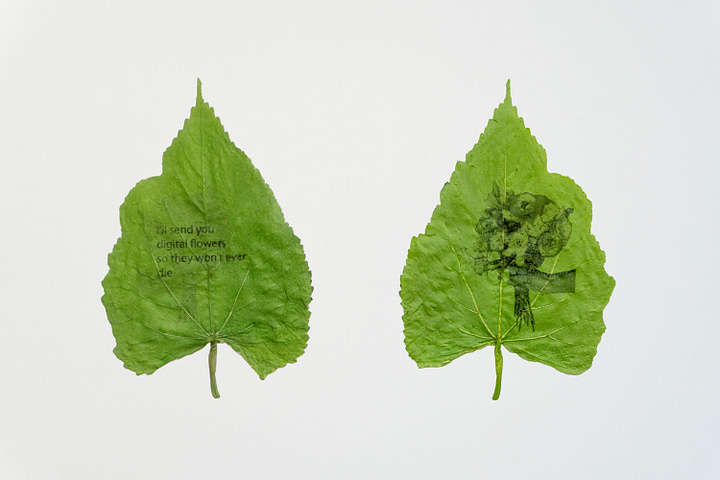
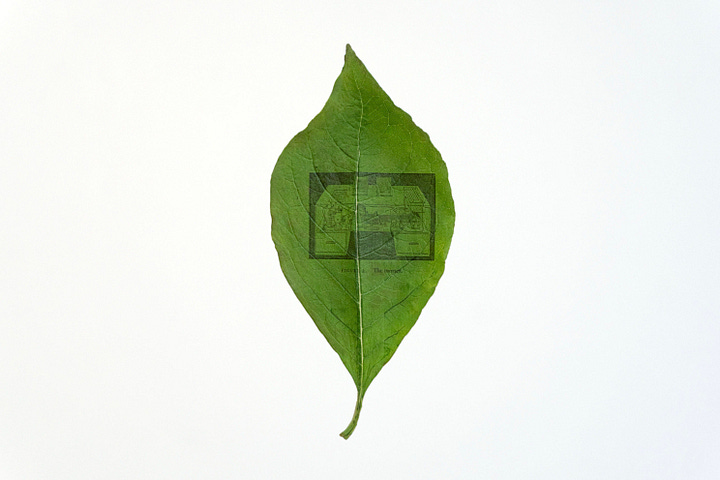
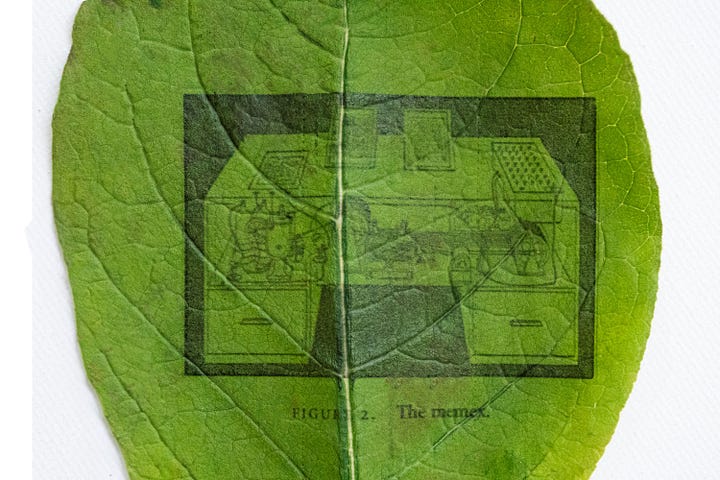
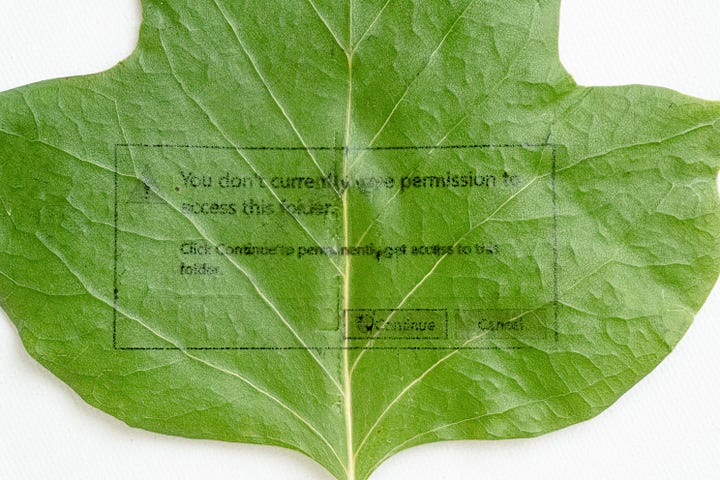
Now, I’m a big proponent for composting. Here in Toronto, each household gets a green bin to collect organic waste (food scraps, yard waste). I think of composting as a sort of meditation. It invites you to be more intentional about the things that we discard. Is this egg carton compostable? Let me check the label. Maybe I should remove the paper lining and recycle that separately. It’s a practice of paying attention.
So I began to wonder what a practice for digital composting may look like. There’s something to differentiate between digital composting, and simply hitting delete. When you delete things en masse, you’re limited in the intentionality you can bring to the process. I remember spring cleaning with my mom as a child. We would empty our closets and, slowly but surely, hold each item in our hands and reflect on it. Remember when we bought this shirt together? You were so small. It doesn’t fit you anymore but maybe the neighbour’s son would like this. Let’s put it in the “give away” pile. Laurel Schwulst (who is amazing, btw) has actually facilitated a digital spring cleaning workshop for the last couple years.4
Digital composting is a practice for facilitating the decay of digital matter. It’s paying attention, reflecting on each item’s significance and decay as a necessary part of digital life. I thought it would be fun to put together an open Are.na board for these digital leftovers: a collective Digital Compost Bin. A shared space where we can give second life to the notes, photos, and other online waste that would otherwise take up space or be deleted. It’s a silly thing, but so are many things. You’re welcome to contribute to it, if you’d like to sift through your phone or computer and share any leftovers that make you go: huh. I’ve pinned some instructions at the top.
Cache
Fantasy by Bruno Munari: Originally published in Italian in 1977, this book is an incredible theory of creativity and exploration of Munari’s own design process. 5/5.
Falling Fruit: an interactive map and database to support and promote urban foraging.
Artisanal Sudoku: a curated collection of hand-set sudoku puzzles. I love the challenge of custom rules (my favourite is the Anti-Knight constraint).
--
That’s itttttttttt for today! Thanks for reading. I have a few exciting things coming up this month, so keep in touch on Instagram - and subscribe here of course :~)
Seeds in soil,
Matt
Chapekis et al. (2024). When Online Content Disappears. Pew Research Centre.
Wendy Hui Kyong Chun (2008). The Enduring Ephemeral, or the Future is a Memory. Critical Inquiry.



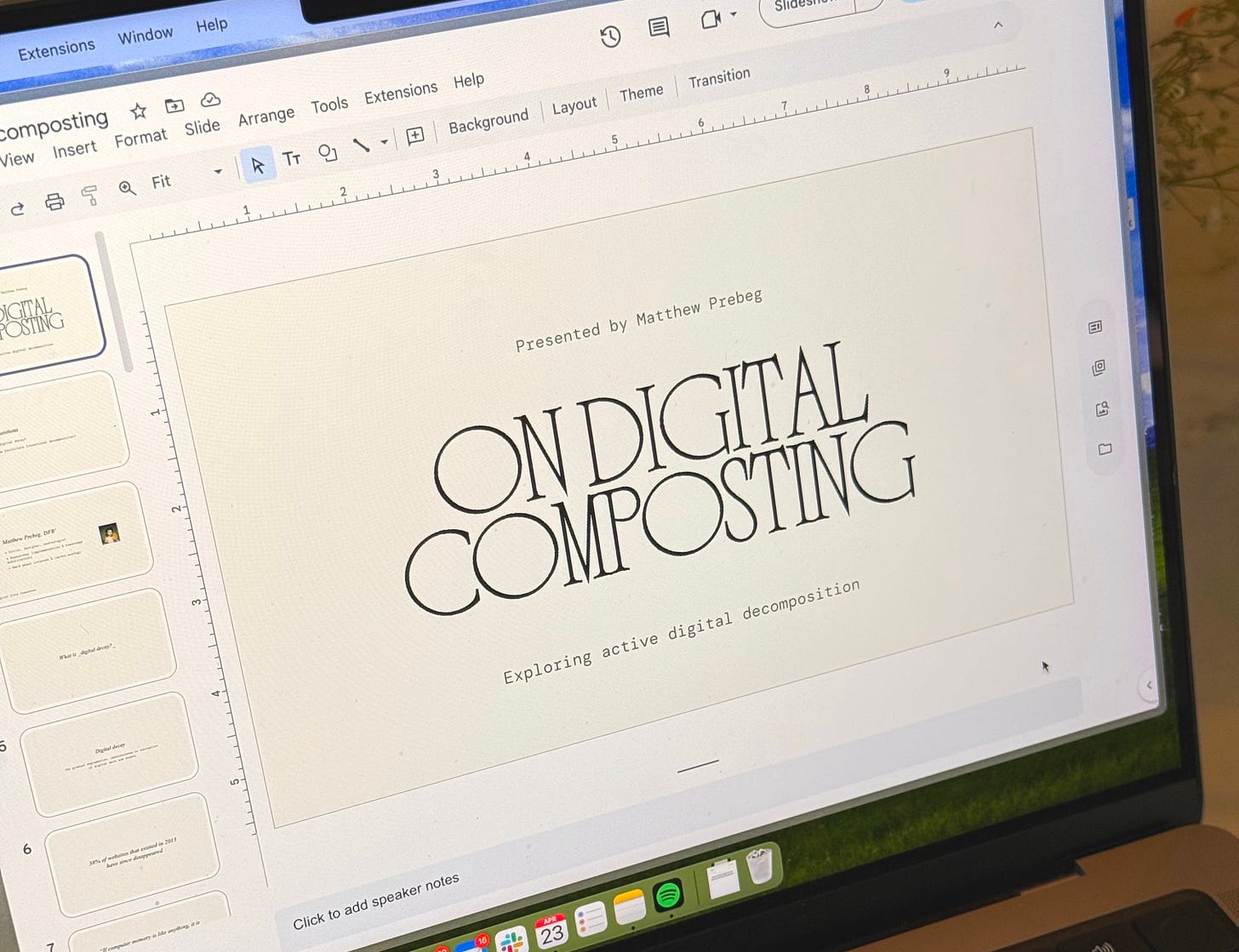
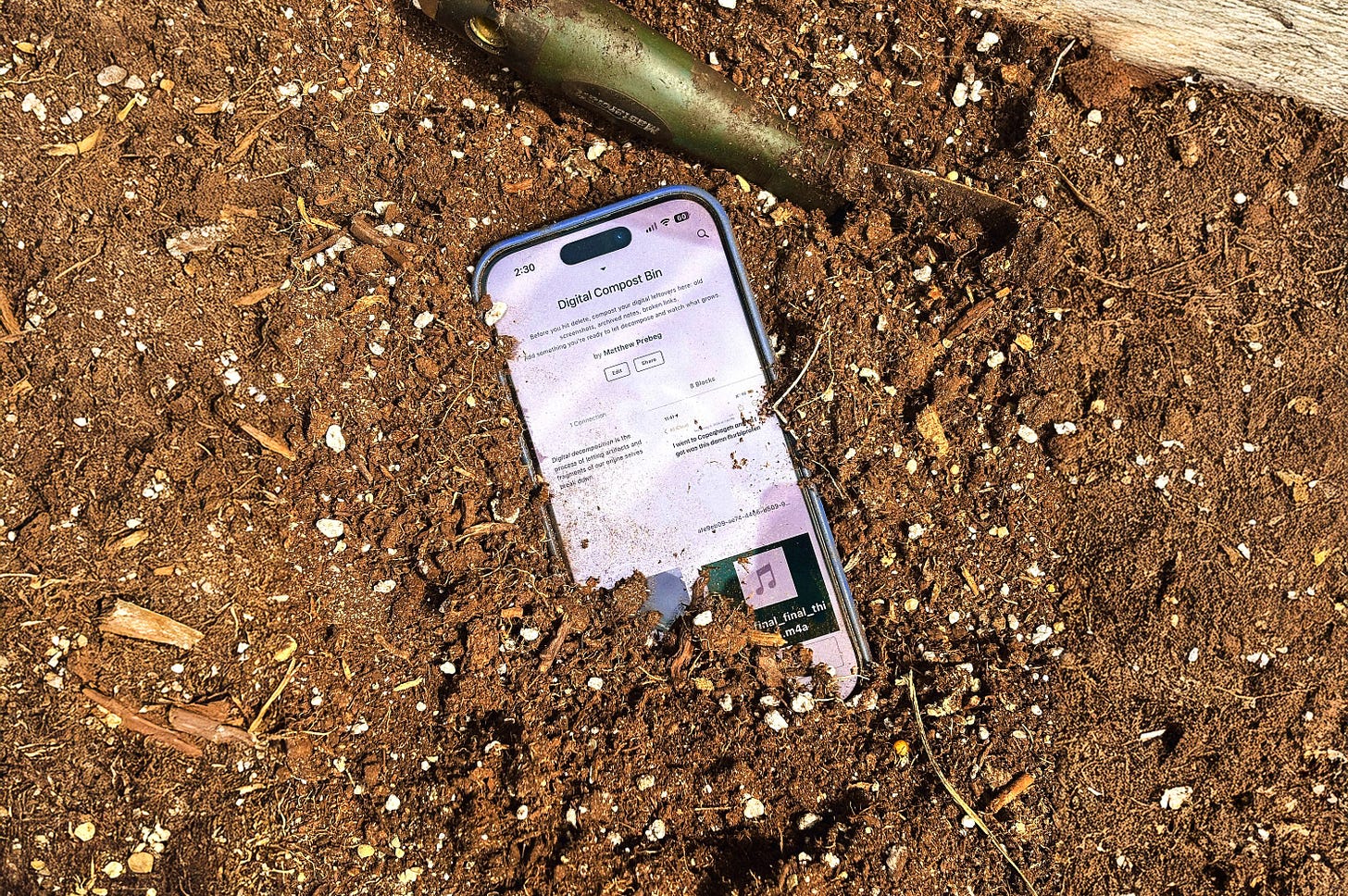
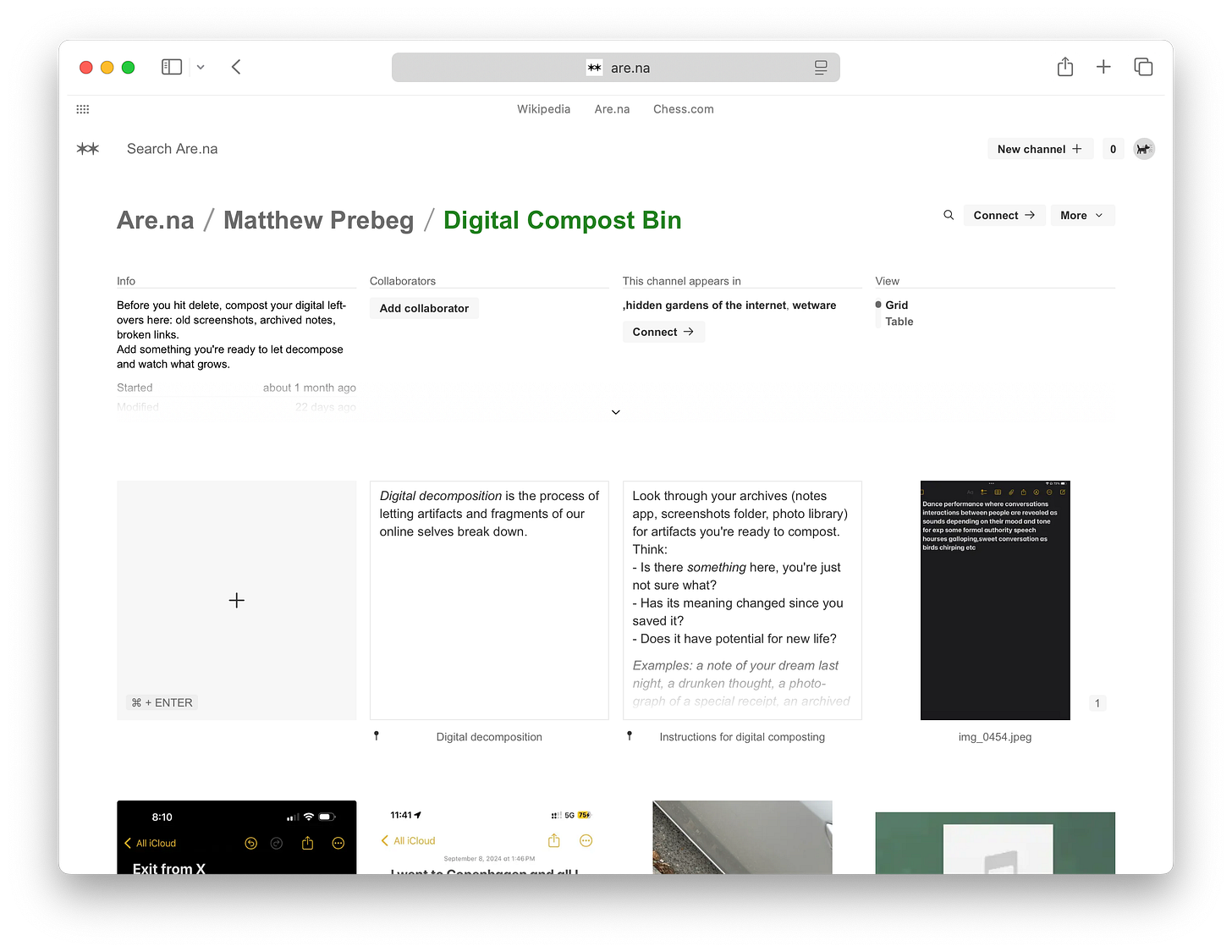
Digital composting might be the only solution to content pollution we are experiencing right now
In all the ways